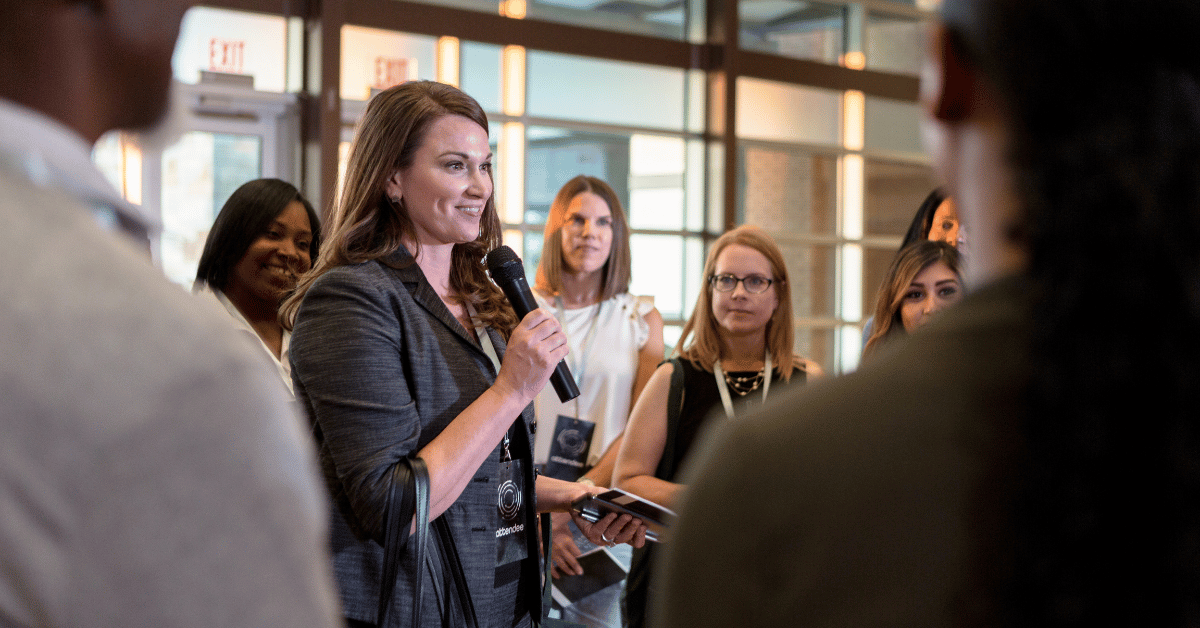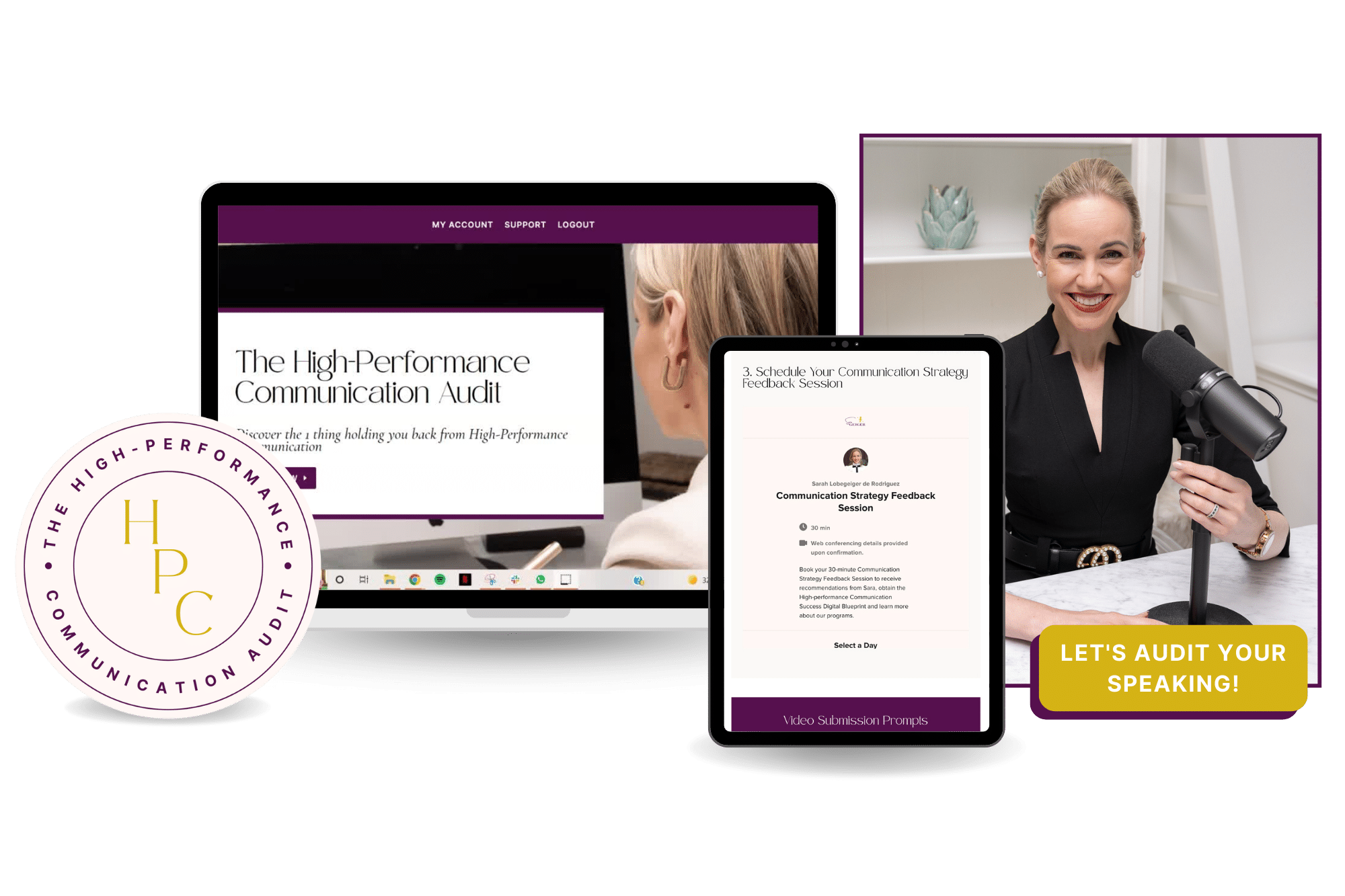Public Speaking
What the Top 3 TED Talk Speakers did Differently: Captivating TED Presentations

Have you ever wondered what makes a TED Talk go viral or a TED speaker become a household name?
If you’re struggling to grasp why almost everyone knows Simon Sinek or Brene Brown, we’ve done the work for you!
At Cadenza, we provide communication strategies to visionary leaders who want to become industry leaders. Using communication science principles, we train you in the tactical positioning that garners visibility, influence, and presence through the best vehicle for that—your communication.
Today, we’ll take a satisfying look at the high-end Ted Talks that extract magnetic attention, views, and social rank and consider why.
So, if you’re feeling frustrated that someone with less expertise or insight than you commandeered the world stage, caught the public’s attention globally, and even required their entire career profile via a Ted talk, this article will help you realise that influence and visibility come down to viable oratory tactics that all humans, including you, can improve on.
What are the Top Three TED Talks?
We sourced the current top 3 Ted talks (as at July 2024) from the TED website. With these 5 talks we undertook some communication analysis to prepare this article. Keep reading to check the top 3 TED Talks and uncover our analysis of why they achieved benchmark success.
This blog post is best digested in 3 parts:
You might want to bookmark this page to refer back to later – because it could take more than one sitting!
- Check our analyses on the Top 5 Ted TAlks ranked below
- Sign up for my FREE masterclass – Take your insights further by signing up for my FREE Masterclass, How to Look & Feel Confident at Work, without guessing what it takes.
- Audit your speaking – If you’ve always wanted to charm, enthral and capture your listener with influential public speaking, presentations and media appearances, this is your opportunity to finally master new techniques and overcome past presenting setbacks. Start the process with our High-Performance Communication Audit.
Optimise your Voice Tone, Boost Your Delivery & Express Yourself Better.
Not all TED Talks hit the same, some become household names.
Over the past decade, we’ve gathered data from our clients to gain insight into their preferred global communicators. Part of this has involved many clients fessing up to their favourite TED talks. Over 11 years, it’s common for the same public speakers to be mentioned, with a strong preference for names such as Brene Brown, Simon Sinek, and even Amy Cuddy to pop up repeatedly.
Perhaps you’ve just started watching TED Talks and are seeking some great recommendations, or maybe you’re preparing to deliver your own Ted Talk or get better at presenting in the boardroom. Whatever it is, this article will outline some definitive public speaking behaviours that establish audience connection, memorability, and, in some cases, viral reach.
The first Ted talk was given in 1984, setting the trend for a new interest in the modern, robust talk economy that, 40 years later, shows no sign of relinquishing its grip on the public psyche.
Set as the baptism of fire for any global industry leader and, in some cases, constituting the very trigger that fires global reach for a new big player, the abbreviation Ted gives us a little clue about how to stand out.
TED = Technology, Entertainment, and Design converged. The architecture of an impactful TED talk is grounded in its tactical design, which successfully reveals complex technical principles in an entertaining way.
Sir Ken Robinson – “Do Schools Kill Creativity?”
Sir Ken Robinson’s topic selection is ingenious. He addresses a topic for which most of the world has a mutual, shared experience- attending school. This provides a broad funnel for almost all viewers to find resonating hook points. Many of the most popular TED talks encourage your attention by discussing a mutually accessible topic. They seek to be inclusive rather than exclusive, addressing shared human experiences in novel ways, thus gaining more gateway entry by striving to appeal to many rather than a few.
Sir Ken Robinson (1950-2020) was no scholastic amateur. With a profound pedigree (published author, knighthood, professor emeritus and international advisor), he managed to find a way to present expert insights in a clear, precise and even comical manner. From his interaction style, Sir Ken presented himself as an affable and witty conversationalist, focusing on human hookpoints rather than showcasing his credentials, teaching every viewer that you can know many things, but how you share your insights determines your impact and global reach.
Brains are complex and the higher the education you receive the greater the risk that you will lose your relatability. Strive to be the everyman like Sir Kevin, it will benefit your relatability and influence more than dedicating effort to appear the smartest man.
Here are some benchmark rhetorical devices that Sir Kevin incorporated into his Ted Talk that contributed to it’s viral success:
- Humour and witty repartee to set his audience at ease – “When my son was four in England — actually, he was four everywhere, to be honest.”
- The use of analogy to make topics easier to understand.
- Figurative language to create a sensory impact.
- Voice intonation variation.
- Futurecasting – “If we think of it, children starting school this year will be retiring in 2065.”
- Humorous storytelling to relay a contention
- Powerful quotes from famous personalities
- Moments of change – often facilitated by pattern interrupting his topic with humorous marks serving to keep the listener listening.
- Clear structure on the key points. Sir Ken warms his audience up with engaging humour, analogies and storytelling before he gets into the key concepts that he wants to relay, using a clear structure. He knows that complex ideas should be presented succinctly so they become accessible.
- Advocacy for the mass collective thus conveying humility – “And I like university professors, but, you know, we shouldn’t hold them up as the high-water mark of all human achievement.” This approach shows the audience what he is (an academic professor) and what he is not (no better than his audience).
- Setting high expectations – Sir Ken strives to share a joint manifesto with his audience to aspire for something better, creating a memorable challenge for the listener to take away with them after the talk is over – “What TED celebrates is the gift of the human imagination. We have to be careful now that we use this gift wisely, and that we avert some of the scenarios that we’ve talked about. And the only way we’ll do it is by seeing our creative capacities for the richness they are and seeing our children for the hope that they are. And our task is to educate their whole being, so they can face this future. By the way — we may not see this future, but they will. And our job is to help them make something of it.”
Take Action: Consider which aspects of Sir Ken’s delivery style you like the most. Then, if you could integrate one of his incredible skills into your speaking style, which would you choose? 🤔
Famous one-liners: “Our education system has mined our minds in the way that we strip-mine the earth for a particular commodity. And for the future, it won’t serve us. We have to rethink the fundamental principles on which we’re educating our children.”
Amy Cuddy – “Your Body Language may shape who you are”
For as long as humans have bodies, body language and topics related to it will always evoke interest, providing new ideas are added. Social psychologist Dr Amy Cuddy has an illustrious academic background, but interestingly, what stands out is winning an Excellence in Teaching Award as a Harvard Lecturer, an indicator that the ability to teach on your topic is one of the first steps to garnering influence as an industry leader.
Despite her illustrious career path and twenty-plus years in academic research, Dr Cuddy has successfully influenced both her peers and colleagues in psychology as much as the world in their living rooms. In so much as the fact that her best seller, Presence, has been translated into 35 languages suggests that Dr Cuddy mastered the skill of mass appeal by addressing topics of global interest in a universally accessible manner.
With this introduction in the background, when watching Dr. Cuddy’s viral Ted Talk presentation, we can strive to see signals of how she, as a top-tier academic, managed to garner attention from voracious viewers consuming her talk to this day while riding their morning commute or waiting in an airport terminal. That Dr Amy Cuddy cuts through the pack and rides the jetstream of attention, placing second to only one as the most viewed Ted Talk, is no algorithm mistake but more an indicator that she is a highly skilled communicator.
Here are some techniques that she put to potent use in her Ted Talk that we can learn from:
- Practical Exercise: Dr. Amy opens with a practical exercise and audit of your body, encouraging attention to her topic by a physical exercise.
- Reference to known people / visuals to demonstrate her topic
- Visual demonstrations of her ideas provided by comical videos and images
- Linking her topic to it’s current relevance in the media via case examples and reference to public figures (Dr. Amy shows footage of Obama’s handshake from a news brief to demonstrate public fixation on the topic of body language, emphasising the relevance of her topic).
- Curating well chosen statistics to add credibility to the importance of her topic
- Discussing sentiments of the collective by using the pronoun we (read more about how “we” increases your charisma profile here)
- Use of a powerful succinct elevator pitch to emphasise why we should listen to her discussion.
- Personal anecdotes and disclosure that reveals personal hardships evoking emotional arousal from her audience.
- Presenting an interesting hypothesis: “Do our nonverbals govern how we think and feel about ourselves?”
- Sharing a group of questions on the topic to answer in a structured manner.
- Storytelling to detail research trials to make her academic insights relevant and accessible.
- A powerful genesis story to showcase how she overcame insurmountable hurdles to achieve success.
Take Action: Consider which aspects of Dr. Cuddy’s delivery style you like the most. Then, if you could integrate one of her incredible skills into your speaking style, which would you choose? 🤔
Famous one-liners: “Don’t fake it till you make it. Fake it till you become it. Do it enough until you actually become it and internalize.”
Tim Urban – “Inside the mind of a master procrastinator”
As one of the most-read internet bloggers, Tim Urban is living evidence that expanding on writing skills pays off with exceptional speaking skills. While it may take some additional work to get the stage presence needed to be a viral public speaker, engaging writing will more often than not directly pop you closer to the slipstream of captivating speaking content.
Tim can expand a text-based topic long form across a diverse ingredients list of human interest concepts, so it is nothing short of fascinating to see how revealing his ideas through a time-limited spoken genre went just as viral as his writing.
At first glance, and after detailed analysis, here are some concrete speaking tools that Tim used to flex his oratory brilliance in the world’s third most popular TED talk:
- Personal recounts of a common human pain point. Tim selects procrastination as his central topic and opens his talk with a captivating story that reminds every listener of the pain of procrastination, creating a mutual experience by positioning the listener at the centre. Interestingly, Tim refers to us through phrases like “you know, you get started maybe a little slowly…” thus appealing to us through his story by implying that we, too, have been there.
- Sparse but powerful diagrams and graphs gear his audience to decode his message visually and verbally.
- Sharing an Odyssey story: Tom gears us with the age-old heroes’ quest by sharing what seemed to be an insurmountable project (his 90-page senior thesis) to enable quick conflict points and a climax early on in his presentation.
- Witty repartee through playful self-deprecation. Tim has such a way with words when talking about himself, resembling stand-up comedy, a powerful device for listener engagement and interest. He openly discloses his fears and hesitancies of the past, which creates openness with his audience and triggers likeability bias.
- Childlike infographics were playfully selected over MRIs to expand complex topics, thus making scientific concepts easily accessible.
- The use of analogy and metaphors heightens the storytelling elements, especially with the key subjects of his talk becoming something like action figures (procrastination becomes the dark playground; the feeling of being late with a deadline is termed the panic monster).
Take Action: Consider which aspects of Tim Urban’s delivery style you like the most. Then, if you could integrate one of his incredible skills into your speaking style, which would you choose? 🤔
Famous one-liners: “It’s always been a dream of mine to have done a TED Talk in the past.”
It’s time to take charge of your presentation skills and become a talented and charismatic speaker for public speaking. We got you!
In case you’re thinking each of these 3 humans is superhuman in fronting a global audience, know that there is a step-by-step way to become a talented and charismatic speaker for public speaking, presentations and media appearances on stage, in the boardroom or behind the lens without spending years trying to overcome performance anxiety.
Presenting anxiety is entirely normal whether in front of an audience, in a pressure-cooker meeting, investor pitch, or behind the camera lens.
Freezing up on stage, moving too much or too little, struggling to project your voice tone or feeling out of sync with your audience are just a few of the challenges we can face when public speaking.
You’re not alone.
If you’ve ever wanted to set the perfect tone for your company with charismatic presentations, media appearances and elegant speaking but have already lost time searching for public speaking courses in Melbourne and feel little inclination to join a generic public speaking class, you should consider our high performance communication services. I will train you in the niche tactics you need to become a vocally influential speaker in a way that accelerates your brand and builds your industry visibility.
Because the last thing you want is to be invited to speak for a huge and unexpected opportunity and not be ready.
Start this process with The High Performance Communication Audit.
If you’ve always wanted to charm, enthral and capture your listener with influential public speaking, presentations and media appearances, this is your opportunity to finally master new techniques and overcome past presenting setbacks.
Become a talented and charismatic speaker in a day so you can confidently conquer presentations on stage, in the boardroom, and behind the lens and present authentically and influentially.
Did you enjoy this post? Make sure to subscribe to our YouTube channel to get more content to increase your communication skills!
About the Author
Dr. Sarah Lobegeiger de Rodriguez is a Keynote Speaker, Executive Speaking Coach, and Opera Singer who likes to play with words, sounds, and your impact.
Her academic background is in Music Performance, Communication Science and Speech & Language Pathology. She assists executive communication clients all over the world as a communication consultant with strong expertise in CEO, Founder and Entrepreneur communication strategies.
Connect with Sarah on LinkedIn.
- Guyer, J. J., et al. (2021). “Paralinguistic Features Communicated through Voice can Affect Appraisals of Confidence and Evaluative Judgments.” Journal of Nonverbal Behavior 45(4): 479-504.
- Hirsch, J., et al. (2023). “Neural mechanisms for emotional contagion and spontaneous mimicry of live facial expressions.” Philosophical Transactions of the Royal Society B: Biological Sciences 378.
- Magee, J., et al. (2010). “Power Differences in the Construal of a Crisis: The Immediate Aftermath of September 11, 2001.” Personality & social psychology bulletin 36: 354-370.
- Peters, K., & Kashima, Y. (2015). A multimodal theory of affect diffusion. Psychological Bulletin, 141(5), 966–992.
- Rosenberg, A. and J. Hirschberg (2009). “Charisma perception from text and speech.” Speech Commun. 51: 640-655.
- Shuqair, S., et al. (2024). “Leveraging online selling through social media influencers.” Journal of Business Research 171: 114391.





